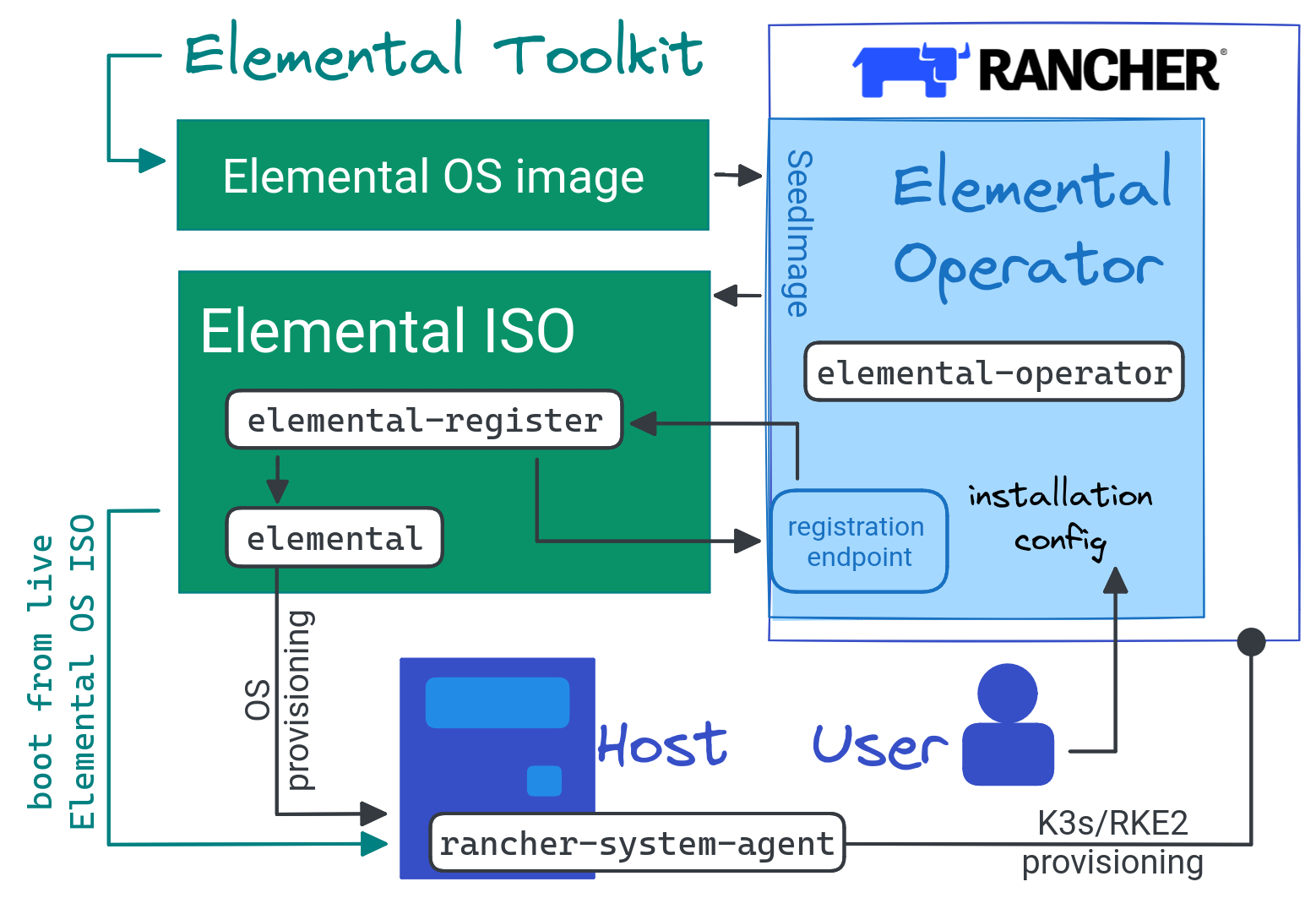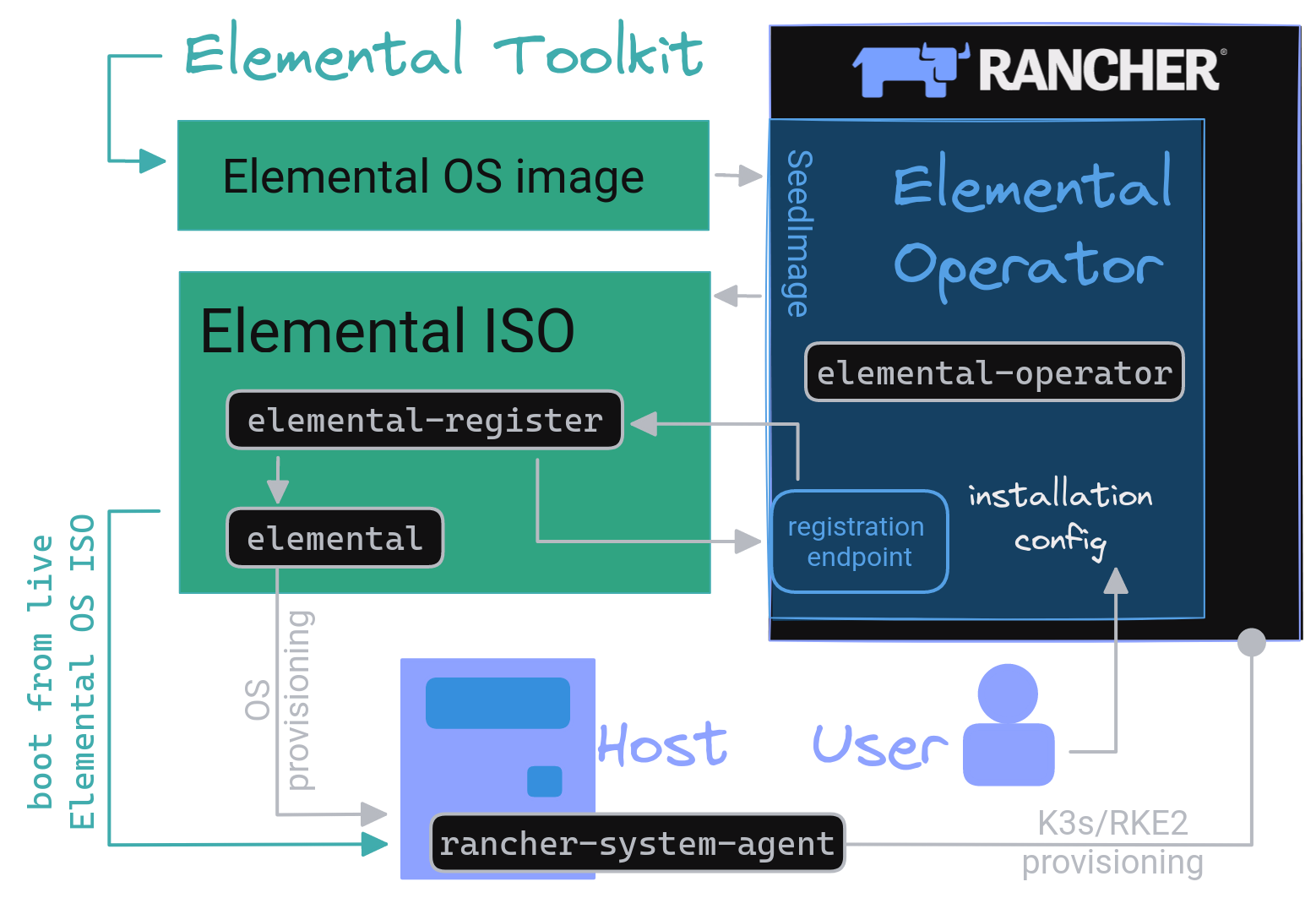Architecture overview
Elemental is the combination of two main projects: the Elemental Toolkit and the Elemental Operator.
The Elemental Toolkit enables OS installation and updates from OCI container images, so the OS can be distributed and retrieved via container registries.
The Elemental Operator extends Rancher with OS provisioning and OS management functionalities, leveraging the Elemental Toolkit. It bridges the gap between the Elemental Toolkit and the Rancher RKE2/K3s Cluster provisioning, to provide a seamless experience going from hosts without OS to fully configured Kubernetes Clusters.
This is achieved through a set of services offered by Elemental that are made possible thanks to the components borrowed from the Elemental Toolkit and the Elemental Operator projects.

